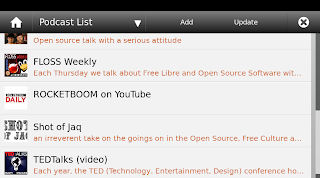This will be the last post for this week, I promise ;) After playing around with the MeeGo Handset launcher and task switcher, I decided to have a look at how this could be implemented in Fremantle, because the big previews and the paginated launcher are easier to use in some cases (you can also checkout the contents of a window while scrolling by without having to activate it). hildon-desktop manages the task switcher and launcher, among other things. The results of two days of hacking are two patches:
What I'm missing right now and did not succeed in implementing straight away is the "snapping" of TidyFingerScroll to page boundaries, so that whenever a scroll operation is finished, it automatically scrolls to center the icon page (for the launcher) or a preview window (for the task switcher). Obligatory demo video (.debs and patches are linked from the threads above if you want to try it out yourself) here:
If you happen to have experience in Clutter, why not give it a try? I suppose you would just need to implement another scroll mode in TidyFingerScroll and then request this mode in hd-task-navigator.c and hd-launcher-page.c. Who's up for the challenge? :)
Random observation: Hidden in hd-task-navigator.c one can find a geeky gem:
xthumb = ythumb = 0xB002E;
A new gPodder release should be ready next week. And now back to some Uni stuff :)









